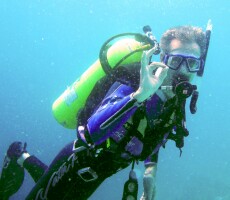 |
C O N F E R E N C E 2014 Thurs May 8 to Sat May 10, 2014 |
 |
Session 25

|
Richard Taylor |
Teaching Physics by Coding |
There are many computer simulations of Physics scenarios available on the internet. Most
Physics teachers are aware of these apps and sometimes use them in their lessons. However,
the people who learn the most Physics from these apps are the people who code them. They are
the ones who have to really bite into the meat of the formulas we try to teach, and they are
the ones for whom vector components are their bread and butter. |
Biography |
Richard Taylor decided to let out his inner teacher in 2001 after a twenty year career as a software engineer. The software engineer side went under cover for several years, but is now emerging again as a kind of hobby. Teaching Physics and Science (and Math) is still Richard's main job at Merivale High School in Ottawa, but now he'd like to teach about how Physics is used in video games and in those cool apps where your iPod knows which way it's pointing. Richard has a continuing fascination with both up (astronomy) and down (scuba diving). |